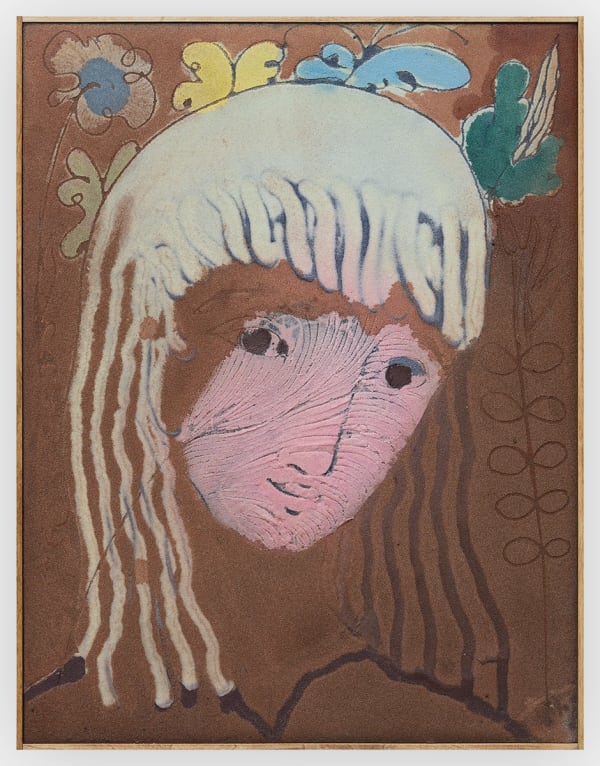Peter Böhnisch: Wedding in Relief
"Böhnisch’s journey begins and ends in a union—a marriage between the spiritual and the material world. With arms wide open, the artist invites us to get acquainted with his art and his thoughts, and to engage with the very questions that guide him."Nicola E. Petek
Peter Böhnisch (b. 1977, Waiblingen, Germany) studied at the State Academy of Fine Arts in Karlsruhe under Anselm Reyle and Andreas Slominski. This marks his first solo exhibition with the gallery.
-
 Peter Böhnisch, Wedding in Relief, 2024
Peter Böhnisch, Wedding in Relief, 2024 -
 Peter Böhnisch, Wedding Dress, 2024
Peter Böhnisch, Wedding Dress, 2024 -
 Peter Böhnisch, Joy, 2024
Peter Böhnisch, Joy, 2024 -
 Peter Böhnisch, In the Desert, 2024
Peter Böhnisch, In the Desert, 2024 -
 Peter Böhnisch, You, 2024
Peter Böhnisch, You, 2024 -
 Peter Böhnisch, Before Sunrise, 2024
Peter Böhnisch, Before Sunrise, 2024 -
 Peter Böhnisch, Im Stein, 2024
Peter Böhnisch, Im Stein, 2024 -
 Peter Böhnisch, Under Olives, 2024
Peter Böhnisch, Under Olives, 2024 -
 Peter Böhnisch, The Power Within You, 2024
Peter Böhnisch, The Power Within You, 2024 -
 Peter Böhnisch, One of the new Gardener, 2024
Peter Böhnisch, One of the new Gardener, 2024 -
 Peter Böhnisch, Night Sails, 2024
Peter Böhnisch, Night Sails, 2024 -
 Peter Böhnisch, Experience Above Monet's Garden, 2024
Peter Böhnisch, Experience Above Monet's Garden, 2024 -
 Peter Böhnisch, Wedding in Relief (ii), 2024
Peter Böhnisch, Wedding in Relief (ii), 2024 -
 Peter Böhnisch, Relief (i), 2024
Peter Böhnisch, Relief (i), 2024 -
 Peter Böhnisch, Relief (ii), 2024
Peter Böhnisch, Relief (ii), 2024 -
 Peter Böhnisch, Getting Closer, 2024
Peter Böhnisch, Getting Closer, 2024 -
![Peter Böhnisch, Welle/3 [from the series "Ocean"], 2022](data:image/gif;base64,R0lGODlhAQABAIAAAAAAAP///yH5BAEAAAAALAAAAAABAAEAAAIBRAA7) Peter Böhnisch, Welle/3 [from the series "Ocean"], 2022
Peter Böhnisch, Welle/3 [from the series "Ocean"], 2022 -
![Peter Böhnisch, Morning/I [from the series "Space"], 2022](data:image/gif;base64,R0lGODlhAQABAIAAAAAAAP///yH5BAEAAAAALAAAAAABAAEAAAIBRAA7) Peter Böhnisch, Morning/I [from the series "Space"], 2022
Peter Böhnisch, Morning/I [from the series "Space"], 2022
What happens when we choose to feel and believe rather than to know? In an age where every question invites an immediate answer, can we still embrace the mystery of the unknown? Peter Böhnisch offers a poignant response by surrendering to uncertainty—not as a sign of weakness, but as a path of exploration. With steadfast determination, he seeks answers not through shortcuts but by walking a path illuminated by his inner light. Along this journey, he becomes an invisible companion to his characters, who, though often depicted alone, embody a profound resilience. These figures raise their sails and embark upon open waters, venturing into Böhnisch’s imaginative landscapes where the unknown is not menacing but brimming with hope.
The voyage across the sea, as German philosopher Hans Blumenberg describes in Schiffbruch mit Zuschauer (Shipwreck with Spectators), is among humanity's oldest metaphors for life. The ocean, a recurring motif in art, symbolizes both the untamable force of nature and the human yearning for departure and discovery. From Rembrandt to Friedrich, Turner to Hokusai, and notably Andy Warhol, the sea has captivated artists across eras. It is a space of longing and peril, harmony and upheaval. One particularly poignant example is the conceptual work of Bas Jan Ader, whose 1975 performance In Search of the Miraculous ended tragically when his tiny vessel disappeared during a transatlantic crossing.
In contrast, Peter Böhnisch’s journey is one of light and renewal. His art navigates challenges with a quiet curiosity, presenting hardship as an opportunity for growth. Vulnerability becomes his strength. Through his pictures, Böhnisch tells stories of exhaustion, perseverance, surrender, and trust in a higher power. This power is not loud or commanding but gentle and pervasive. A wave cradles a lone figure like an embrace while a tree bends protectively over a reclining boy. Raised sails become shields, standing against unseen adversities. His works revisit themes that have occupied him for decades—the portrait, the boat, and spiritual encounters—all radiating an inner luminosity.
The materiality is just as extraordinary as the picture itself. Böhnisch has been working with sand in the last decade, seeing it as a gift and, above all, as a patient experimental material for his alchemical transformations. The results manifest as fine sand reliefs that emerge from the pictorial sphere through their textured surfaces as if striving to forge a connection to our side of reality. The contours sometimes disrupt the hardened surface, allowing what lies beneath to seep through. In other instances, the pigment seems to float almost weightlessly across the canvas, enriching the ethereal quality of his work.
Böhnisch’s journey begins and ends in a union—a marriage between the spiritual and the material world. With arms wide open, the artist invites us to get acquainted with his art and his thoughts, and to engage with the very questions that guide him. Perhaps together, we might find answers—or perhaps, like Böhnisch, we might learn to cherish the questions themselves. In a world so often overwhelmed by certainty, his pictures remind us of the beauty in seeking light amidst the unknown.
For additional information, please contact info@vardangallery.com


















![Peter Böhnisch, Welle/3 [from the series "Ocean"], 2022](https://artlogic-res.cloudinary.com/w_600,c_limit,f_auto,fl_lossy,q_auto/artlogicstorage/vardangallery/images/view/78e3217514b13ed6c4c7e6ba0796a439j/vardangallery-peter-b-hnisch-welle-3-from-the-series-ocean-2022.jpg)
![Peter Böhnisch, Morning/I [from the series "Space"], 2022](https://artlogic-res.cloudinary.com/w_600,c_limit,f_auto,fl_lossy,q_auto/artlogicstorage/vardangallery/images/view/e5d64def26205d75c3fcc33b73a7bb58j/vardangallery-peter-b-hnisch-morning-i-from-the-series-space-2022.jpg)